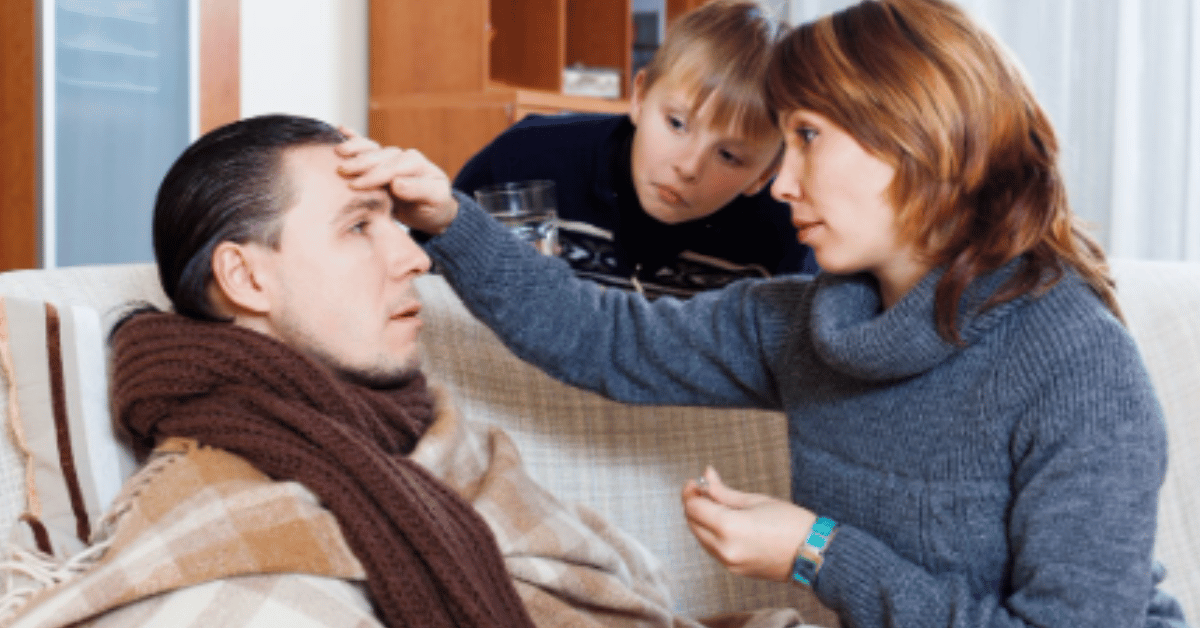Cedar fever, often mistaken for the common cold, is a seasonal allergic reaction primarily caused by exposure to mountain cedar pollen. People experiencing cedar fever symptoms usually encounter sudden sneezing, itchy eyes, and persistent nasal congestion, often at levels more intense than typical seasonal allergies. Recognizing these symptoms early is crucial because untreated cedar fever can lead to complications such as sinus infections, fatigue, and decreased quality of life. Unlike ordinary colds, cedar fever rarely results in fever or body aches, making symptom awareness critical for timely intervention. In regions where mountain cedar trees are prevalent, the onset of cedar fever coincides with peak pollen seasons, often from late fall to early winter. Understanding the underlying causes, symptom patterns, and preventive strategies enables individuals to manage the condition effectively and maintain day-to-day productivity without being debilitated by severe allergic reactions.
Cedar fever manifests through a variety of symptoms that affect the respiratory system, eyes, and general well-being. Sneezing is typically the first and most noticeable sign, often occurring in rapid succession and triggered by exposure to airborne pollen. Nasal congestion follows, with many patients reporting a continuous feeling of stuffiness and irritation, sometimes accompanied by a runny nose. Ocular symptoms, including itchy, watery, and red eyes, are common and can interfere with visual comfort and clarity. Some individuals may also experience throat irritation, mild cough, or post-nasal drip. Sleep disturbances are frequently reported due to persistent congestion, leading to daytime fatigue and reduced cognitive performance. While the severity of symptoms varies, individuals with pre-existing asthma or other respiratory conditions may experience more pronounced complications, making accurate identification and management essential for long-term health. Awareness of these early indicators can significantly improve patient outcomes.
Common Cedar Fever Symptoms
| Symptom | Description | Typical Duration | Severity Level |
|---|---|---|---|
| Sneezing | Sudden, frequent sneezing due to pollen exposure | 2–4 weeks | Moderate to Severe |
| Nasal Congestion | Blocked nasal passages causing difficulty breathing | 2–6 weeks | Moderate |
| Runny Nose | Clear nasal discharge associated with allergy | 2–6 weeks | Mild to Moderate |
| Itchy Eyes | Persistent itching and irritation in the eyes | 2–5 weeks | Moderate |
| Watery Eyes | Excess tearing caused by allergic reaction | 2–5 weeks | Mild to Moderate |
| Fatigue | Daytime tiredness due to poor sleep | Throughout pollen season | Mild to Moderate |
| Post-Nasal Drip | Mucus accumulation in throat causing discomfort | 2–6 weeks | Mild |
Identifying cedar fever requires careful observation of the timing and pattern of symptoms. Unlike viral infections, cedar fever tends to spike during specific months coinciding with pollen release, particularly from mountain cedar trees. Individuals may notice that symptoms worsen when outdoors or during windy days, which distribute pollen more extensively. Family history also plays a role, as genetic predisposition to allergic reactions increases susceptibility. Seasonal patterns can help distinguish cedar fever from other respiratory conditions, and consulting with an allergist may confirm the diagnosis through skin or blood tests. Proper recognition is essential for targeted management strategies, including environmental modifications, medication, and lifestyle adjustments. According to Dr. Helen Roberts, a leading allergist, “Early recognition of cedar fever symptoms allows patients to adopt preventative measures and reduce overall symptom severity.”
Causes and Triggers of Cedar Fever
Cedar fever occurs due to an overactive immune response to mountain cedar pollen. When pollen particles enter the nasal passages, the immune system mistakenly identifies them as harmful invaders. This triggers the release of histamines and other inflammatory chemicals, causing typical allergic symptoms such as sneezing, congestion, and itchy eyes. Environmental factors, including dry, windy conditions, can exacerbate pollen dispersion and increase exposure. Prolonged outdoor activities in cedar-rich regions further elevate the risk of experiencing severe symptoms. Other triggers may include dust, pet dander, or mold spores, which can compound allergic responses. Individuals with a history of hay fever, asthma, or eczema are particularly vulnerable. According to recent allergen studies, the volume of cedar pollen in certain areas can reach several thousand grains per cubic meter of air during peak season, emphasizing the intensity and prevalence of cedar fever in endemic regions.
Distinguishing Cedar Fever from Common Cold
Differentiating cedar fever from the common cold is essential for effective treatment. Cedar fever rarely presents with fever, body aches, or colored nasal discharge, which are hallmark indicators of viral infections. Instead, clear nasal mucus, itchy eyes, and repetitive sneezing are more characteristic of allergic reactions. Symptoms are triggered by environmental exposure rather than contagious contact, meaning that other household members are less likely to develop similar symptoms simultaneously. Duration is another distinguishing factor: cedar fever persists throughout the pollen season, whereas cold symptoms usually resolve within a week or two. Awareness of these distinctions allows patients to avoid unnecessary antibiotics and focus on allergy-specific treatments. As Dr. Michael Sanders, a clinical immunologist, notes, “Patients often misattribute cedar fever to viral infections, delaying proper allergy management and exacerbating discomfort.”
Table: Cedar Fever vs. Common Cold
| Feature | Cedar Fever | Common Cold |
|---|---|---|
| Fever | Rare | Often present |
| Body Aches | Rare | Common |
| Nasal Discharge | Clear | Yellow/Green |
| Sneezing | Frequent, sudden | Mild to moderate |
| Duration | Weeks during pollen season | 5–10 days |
| Contagious | No | Yes |
| Eye Symptoms | Itchy, watery eyes | Rare |
Complications of Untreated Cedar Fever
If left unmanaged, cedar fever can lead to more severe complications. Chronic nasal congestion may result in sinus infections due to the accumulation of mucus, creating a breeding ground for bacteria. Persistent post-nasal drip can cause throat irritation, chronic cough, and hoarseness. Sleep disturbances caused by blocked nasal passages can lead to daytime fatigue, affecting mental alertness and productivity. Individuals with asthma may experience exacerbated breathing difficulties, increasing the risk of asthma attacks. Additionally, untreated cedar fever can lead to a reduced quality of life due to ongoing discomfort and frustration with persistent symptoms. Early intervention through medications, lifestyle modifications, and environmental management is crucial to minimizing the impact of cedar fever on overall health.
Managing Cedar Fever: Preventive Strategies
Preventing cedar fever involves reducing exposure to airborne pollen and supporting the body’s immune response. Staying indoors during peak pollen hours, especially on dry, windy days, is highly effective. Using high-efficiency particulate air (HEPA) filters in homes and vehicles can trap pollen particles, reducing indoor exposure. Wearing sunglasses and protective masks outdoors can shield the eyes and respiratory system. Regularly washing hands, face, and nasal passages after outdoor activities minimizes pollen residue. Hydration and a balanced diet rich in antioxidants can support immune function, reducing the severity of allergic responses. According to allergists, integrating multiple preventive strategies is more effective than relying solely on medication, allowing individuals to maintain normal activities while minimizing symptoms.
Medical Treatments for Cedar Fever
Pharmacological interventions play a central role in managing cedar fever symptoms. Antihistamines, such as loratadine or cetirizine, help control sneezing, runny nose, and itchy eyes. Nasal corticosteroid sprays reduce inflammation in nasal passages, improving breathing and decreasing congestion. Decongestants, while effective for short-term relief, should be used cautiously due to potential rebound congestion with prolonged use. Eye drops formulated for allergies can relieve itching and watering, providing comfort for ocular symptoms. Severe or persistent cases may benefit from allergen immunotherapy, which gradually desensitizes the immune system to cedar pollen. Consulting with a healthcare professional ensures appropriate treatment selection and dosage management. Dr. Elaine Thompson emphasizes, “Customized treatment plans tailored to the patient’s symptom severity and lifestyle provide the best outcomes in cedar fever management.”
Lifestyle Adjustments for Symptom Relief
Lifestyle modifications can enhance treatment effectiveness and improve quality of life for cedar fever sufferers. Keeping windows closed during peak pollen season reduces indoor exposure, while regular vacuuming with HEPA filters prevents pollen accumulation on floors and furniture. Showering and changing clothes after outdoor activities help remove pollen from hair and skin. Incorporating saline nasal rinses can flush out allergens, reducing nasal irritation. Engaging in moderate physical activity indoors maintains overall health without exacerbating symptoms. Stress management techniques, including mindfulness, yoga, or breathing exercises, may also support immune function and alleviate symptom severity. By combining lifestyle adjustments with medical treatments, patients can achieve a holistic approach to cedar fever management.
Table: Cedar Fever Treatment Options
| Treatment Type | Examples | Symptom Relief |
|---|---|---|
| Antihistamines | Loratadine, Cetirizine | Sneezing, Runny Nose, Itchy Eyes |
| Nasal Sprays | Fluticasone, Mometasone | Nasal Congestion |
| Decongestants | Pseudoephedrine | Short-term Nasal Relief |
| Eye Drops | Ketotifen, Olopatadine | Itchy/Watery Eyes |
| Immunotherapy | Allergy Shots or Sublingual Tablets | Long-term Immune Response |
| Lifestyle Measures | HEPA filters, Nasal Rinse, Masks | Overall Symptom Reduction |
When to See a Doctor
While cedar fever is often manageable at home, certain signs warrant medical consultation. Persistent symptoms lasting beyond the typical pollen season may indicate underlying issues such as chronic sinusitis or asthma exacerbation. Severe eye irritation, facial pain, or significant breathing difficulties require prompt evaluation. Patients who experience side effects from medications or find that over-the-counter treatments are ineffective should seek professional guidance. An allergist can provide comprehensive testing, confirm the diagnosis, and recommend advanced treatment options such as immunotherapy. Early medical intervention ensures symptom control, prevents complications, and supports a better quality of life during peak cedar pollen periods.
Cedar Fever and Daily Life
Cedar fever symptoms can significantly impact daily routines, productivity, and social interactions. Frequent sneezing, nasal congestion, and fatigue may affect concentration, making tasks at work or school more challenging. Ocular irritation can reduce visual comfort, impacting reading, driving, and screen use. Outdoor recreational activities, including sports and hiking, may become less enjoyable due to symptom flare-ups. Planning daily activities around pollen forecasts, using preventive measures, and adhering to treatment regimens can mitigate these effects. Employers and educators can also play a role by accommodating affected individuals through flexible schedules or remote options. Dr. Sarah Langley observes, “Awareness and proactive management of cedar fever empower patients to maintain normal life activities without compromising health or comfort.”
Coping Strategies for Children and Elderly
Children and older adults are particularly susceptible to the effects of cedar fever. Pediatric patients may experience irritability, difficulty sleeping, and concentration challenges in school due to nasal congestion and fatigue. Older adults often face compounded respiratory issues, including asthma or chronic obstructive pulmonary disease, which can worsen cedar fever symptoms. Parents and caregivers should monitor symptom onset, ensure proper medication adherence, and minimize outdoor exposure during peak pollen times. Indoor air quality can be optimized using HEPA filters, while nasal saline rinses can provide relief without medication overuse. Educators can accommodate children through flexible activity schedules and allowing breaks for symptom management. Supporting these vulnerable populations ensures safer, more comfortable seasonal transitions.
Emerging Research and Future Directions
Recent studies in immunology and allergen control have advanced understanding of cedar fever mechanisms and treatment options. Researchers are exploring novel antihistamines with fewer side effects, innovative immunotherapy protocols, and predictive models for pollen dispersion to optimize preventive strategies. Digital health tools, such as mobile apps that track pollen levels and symptom severity, allow patients to make informed daily decisions. Additionally, urban planning efforts in some regions are considering the reduction of mountain cedar planting near residential zones to minimize population-level exposure. Continued research into the genetic and environmental factors contributing to cedar fever promises more personalized and effective treatments in the coming years.
Conclusion
Cedar fever is a prevalent seasonal allergy that significantly impacts physical comfort, daily productivity, and overall well-being. Recognizing the hallmark cedar fever symptoms—sneezing, nasal congestion, itchy eyes, and fatigue—is critical for timely management. Distinguishing these symptoms from viral infections ensures appropriate treatment through medications, lifestyle adjustments, and preventive measures. Vulnerable populations, including children, the elderly, and individuals with pre-existing respiratory conditions, require special attention and tailored interventions. Emerging research offers hope for more effective, personalized management strategies, reducing symptom severity and enhancing quality of life. By combining environmental awareness, medical guidance, and proactive coping strategies, individuals can navigate cedar fever season confidently, minimizing its disruption and maintaining optimal health throughout the year.
FAQs
1. What distinguishes cedar fever from a common cold?
Cedar fever is an allergic reaction primarily triggered by mountain cedar pollen, whereas the common cold is a viral infection. Key differences include the absence of fever or body aches in cedar fever, the presence of itchy, watery eyes, and clear nasal discharge. While cold symptoms usually resolve in a week, cedar fever persists throughout the pollen season. Environmental exposure, such as outdoor activity during peak pollen times, typically worsens cedar fever symptoms, whereas colds are transmitted from person to person. Accurate identification ensures proper treatment, such as antihistamines or nasal corticosteroids, rather than unnecessary antibiotics.
2. How can I prevent cedar fever symptoms effectively?
Prevention relies on minimizing exposure to airborne pollen. Stay indoors during peak pollen hours, especially on dry, windy days. Use HEPA air filters in homes and vehicles, and consider wearing protective masks or sunglasses outdoors. Regularly washing hands, face, and nasal passages after outdoor activity helps reduce pollen buildup. Nasal saline rinses can flush out allergens, and maintaining hydration supports overall immune function. Combining multiple preventive strategies with timely medication use is more effective than relying on a single method.
3. Are there long-term treatments for severe cedar fever?
Yes, allergen immunotherapy provides a long-term approach for individuals with severe or persistent cedar fever. This treatment involves gradually exposing the immune system to controlled doses of cedar pollen, either via subcutaneous injections or sublingual tablets, to desensitize allergic reactions. Over time, immunotherapy can reduce the frequency and severity of symptoms, decrease medication reliance, and improve quality of life during peak pollen seasons. It is most effective when guided by an allergist and tailored to the patient’s symptom profile.
4. Can children and elderly individuals safely manage cedar fever?
Children and older adults require careful management due to increased vulnerability. Pediatric patients may experience irritability, sleep disturbances, or concentration difficulties, while older adults may face exacerbated respiratory complications. Safe management includes age-appropriate antihistamines, nasal saline rinses, indoor air quality improvements, and limiting outdoor exposure during peak pollen times. Continuous monitoring of symptoms and consultation with a healthcare provider ensures both safety and symptom relief.
5. When should I see a doctor for cedar fever?
Medical consultation is advised if symptoms persist beyond the typical pollen season, if there is severe eye irritation, facial pain, or difficulty breathing, or if over-the-counter medications are ineffective. A healthcare provider can confirm the diagnosis through skin or blood allergy tests and provide advanced treatment options such as prescription antihistamines, corticosteroids, or immunotherapy. Early intervention helps prevent complications like chronic sinusitis, sleep disturbances, and asthma exacerbation.











